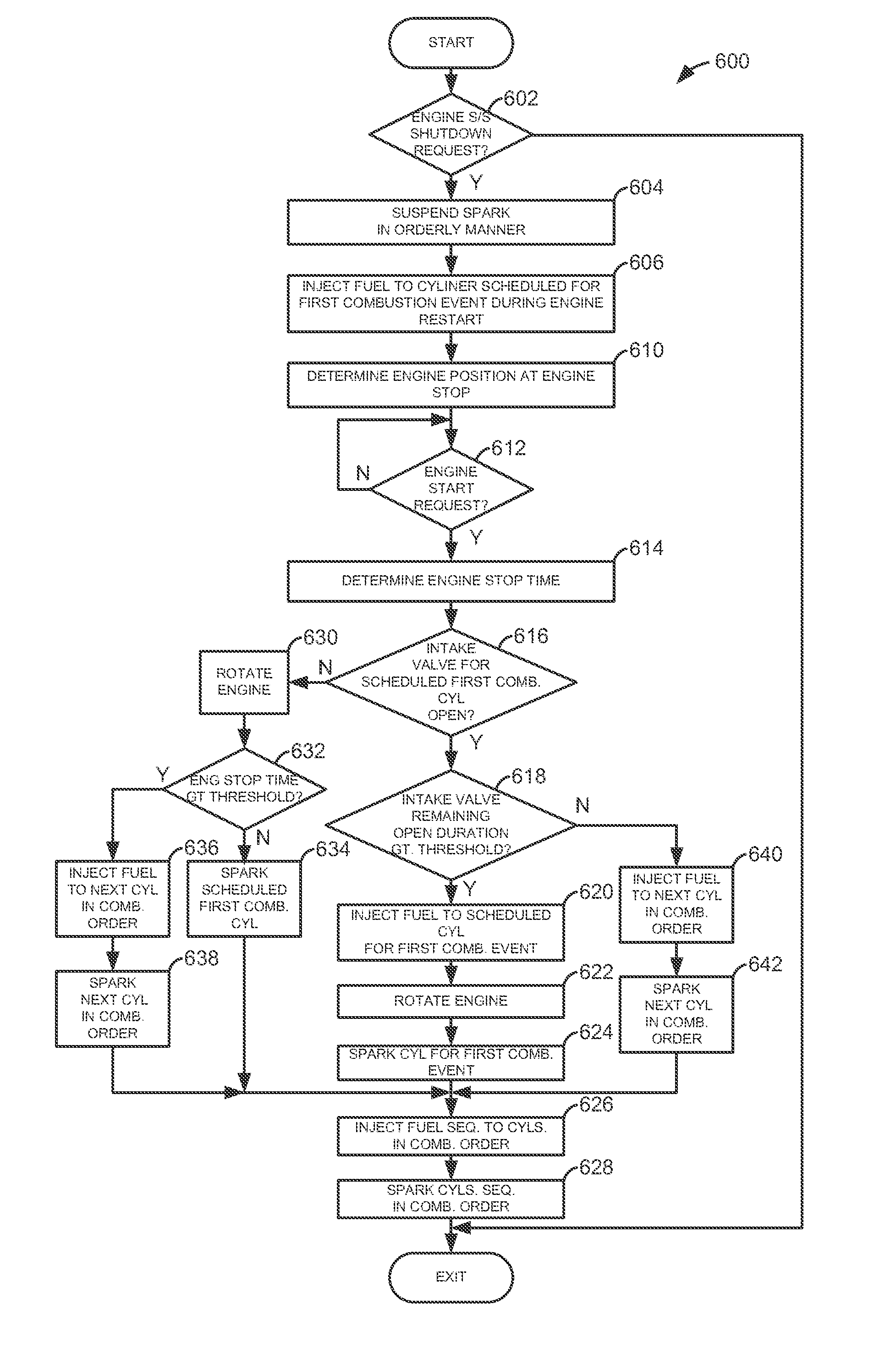Method for fueling an engine at start
a technology of starting and fueling an engine, which is applied in the direction of engine starters, electric control, instruments, etc., can solve the problems of increasing engine emissions, restarting the engine, and increasing the amount of fuel entering the engine cylinder, so as to prolong the start time, increase the engine emissions, and save fuel
- Summary
- Abstract
- Description
- Claims
- Application Information
AI Technical Summary
Benefits of technology
Problems solved by technology
Method used
Image
Examples
Embodiment Construction
[0013]The present description is related to engine fueling during automatically starting an engine. In one non-limiting example, the engine may be configured as illustrated in FIG. 1. Engine starting may be performed according to the sequences described by FIGS. 2-5. The method of FIG. 6 may be executed via controller instructions in a system as shown in FIG. 1 to provide the engine starting sequences shown in FIGS. 2-5.
[0014]Referring to FIG. 1, internal combustion engine 10, comprising a plurality of cylinders, one cylinder of which is shown in FIG. 1, is controlled by electronic engine controller 12. Engine 10 includes combustion chamber 30 and cylinder walls 32 with piston 36 positioned therein and connected to crankshaft 40. Combustion chamber 30 is shown communicating with intake manifold 44 and exhaust manifold 48 via respective intake valve 52 and exhaust valve 54. Each intake and exhaust valve may be operated by an intake cam 51 and an exhaust cam 53. Alternatively, one or ...
PUM
 Login to View More
Login to View More Abstract
Description
Claims
Application Information
 Login to View More
Login to View More - R&D
- Intellectual Property
- Life Sciences
- Materials
- Tech Scout
- Unparalleled Data Quality
- Higher Quality Content
- 60% Fewer Hallucinations
Browse by: Latest US Patents, China's latest patents, Technical Efficacy Thesaurus, Application Domain, Technology Topic, Popular Technical Reports.
© 2025 PatSnap. All rights reserved.Legal|Privacy policy|Modern Slavery Act Transparency Statement|Sitemap|About US| Contact US: help@patsnap.com



